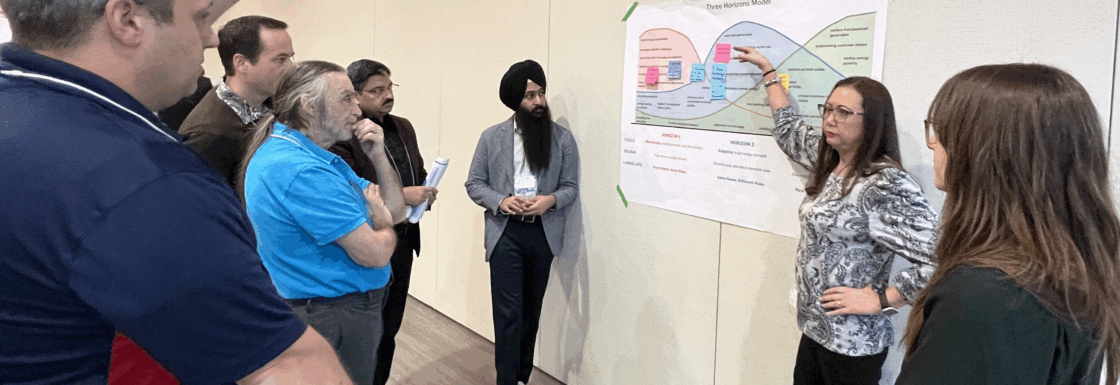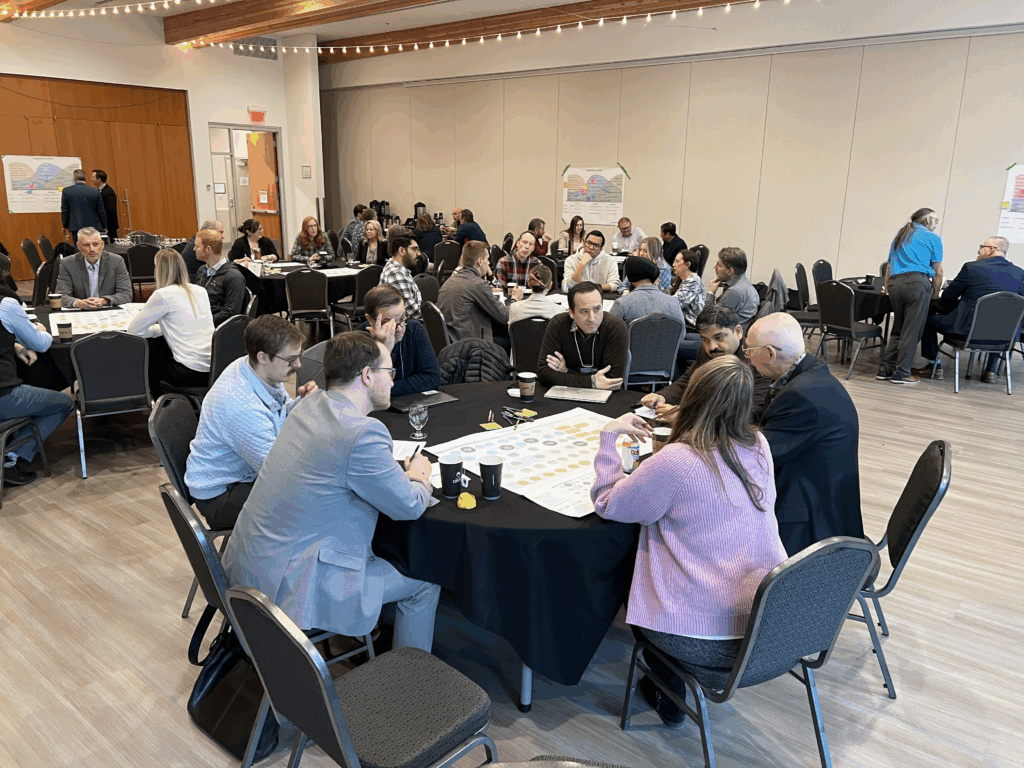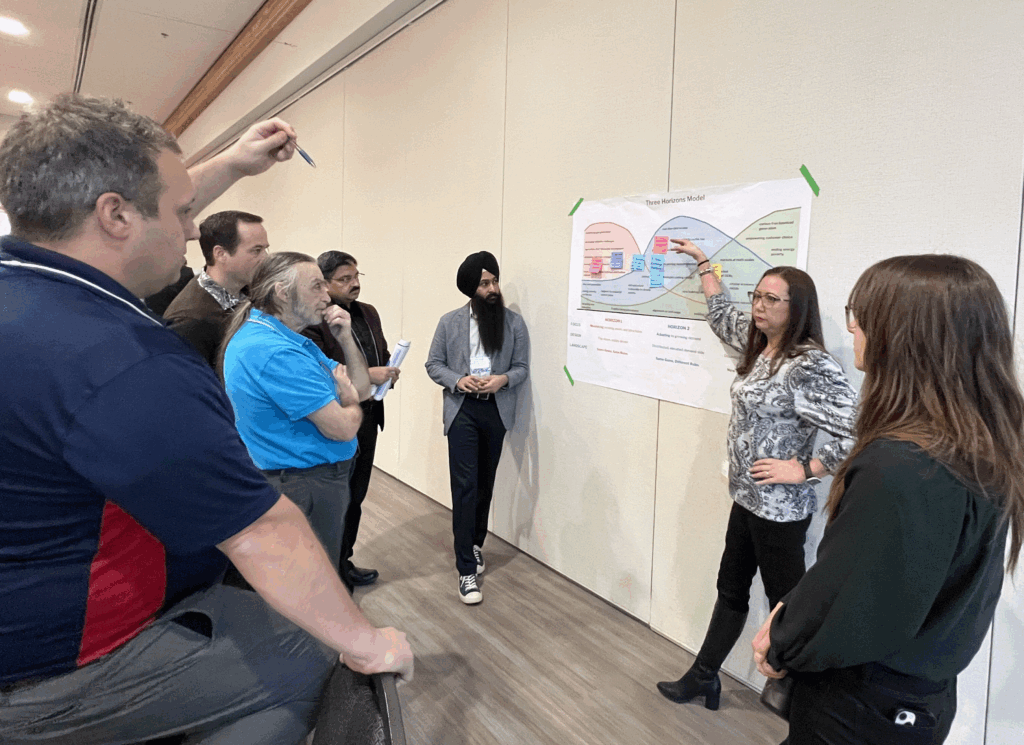Modernizing Alberta’s Electricity Distribution Policy

We rarely consider changes to energy distribution infrastructure when discussing the clean energy transition. But aging infrastructure is causing problems in the energy distribution sector that affect customer experience and emissions. Alberta’s Electricity Future (AEF) have been formulating market-based solutions and formal policy recommendations to tackle major infrastructure issues in the province. Alison Cretney explains those recommendations and what we need in order for an effective energy transition.
In the race to decarbonize Canada’s energy systems, electricity plays a central role — powering homes, transportation, industries, and innovation. But while public attention often focuses on generation and transmission, the distribution system — the poles and wires that deliver power directly to customers — remains largely unchanged. Alberta’s distribution grid wasn’t designed for today’s rapidly shifting demands, and modernizing it is essential if we want a system that is affordable, reliable, and responsive to evolving customer needs.
Today, Alberta’s distribution system primarily continues to operate in traditional ways that don’t fully meet the emerging needs of customers. Affordability has become one of the most pressing challenges. Without a credible path to manage costs for ratepayers, it will be difficult to build the public and political support needed for broader system changes.

The Government of Alberta is expected to develop its first-ever electricity distribution policy, with public engagement anticipated to begin in late 2025. This represents a timely opportunity for policymakers to signal their support for a shift from a traditional, emissions-intensive, one-directional model to a more flexible system that supports customer choice, enables innovation, and drives system-wide efficiencies. Thereby, minimizing the risk and costs associated with an overbuilt, under-utilized system. As a uniquely deregulated province, Alberta also has an opportunity to create a distribution framework that creates opportunities for investment, drives new business models and meets shifting consumer expectations and behaviours to accelerate modernization across the electricity sector.
Through Alberta’s Electricity Future (AEF), an Energy Futures Lab initiative, a diverse group of stakeholders — including generators, utilities, retailers, the system operator, Indigenous and rural communities, energy innovators, and policymakers — came together to co-create a shared vision for the future of electricity in Alberta. This work set a direction for the desired future state of Alberta’s electricity system that was shared by the majority of system players, and informed solutions for successfully navigating there. The first set of solutions advanced by diverse stakeholders in an 8 month sprint were focused on enabling the implementation of distributed energy, demand-side management and local market solutions, and also informed formal policy recommendations that the Lab and AEF Leadership Council delivered to the government at the end of May 2025. The recommendations focused on the three critical capabilities Alberta must build into its distribution system to enable affordability, reliability, and innovation in a net-zero future.
Three Capabilities to Modernize Alberta’s Distribution System

Alberta’s Electricity Future identified three core capabilities the province must enable through policy to modernize its distribution system: cost-effective non-wires solutions, demand-side management tailored to Alberta’s context, and foundational data-gathering and usage capabilities and infrastructure. These are not abstract ambitions — they respond directly to constraints that Alberta is already facing. Other jurisdictions have shown that acting on these fronts can reduce costs, improve system resilience, and enable more responsive, inclusive energy solutions.
1. Modernizing System Planning with Non-Wires Solutions
Alberta’s current distribution planning and investment processes remain primarily anchored in conventional infrastructure buildout. But by looking at only one half of the equation—expanding generation to meet demand, and by extension the large-scale infrastructure necessary to connect it to the grid—we miss opportunities to optimize what we have already built, allowing us to accommodate needed capacity faster and more economically. Going the conventional route, with its long construction timeframes and larger investment requirements, risks having growing demand outpace the system’s ability to grow. This could lead to longer connection times, possibly even brown outs and unduly constrain economic growth.
By embedding non-wires solutions— such as demand response, distributed storage, and localized renewables — into system planning, Alberta can defer or avoid capital investment while improving service in rural, remote, and fast-growing areas. This shift requires ensuring regulatory tools and incentives are aligned effectively for utilities to evaluate and benefit from non-wires options on a level playing field with traditional infrastructure.
2. Enabling Demand-Side Management for Alberta’s Grid
Demand-side management (DSM) is among the most proven and cost-effective mechanisms for reducing peak demand, managing emissions, and improving affordability. Yet in Alberta, DSM is inconsistently applied and largely absent at the distribution level.
A fit-for-Alberta DSM strategy would establish shared principles and system-level outcomes, while allowing flexibility in how programs are delivered by different distribution companies. Regional pilots and community-driven approaches can accelerate learning and impact — especially when paired with digital tools that empower consumers to participate.
3. Unlocking Real-Time Data and Grid Visibility
Alberta’s distribution system lacks cohesive and prevalent capabilities for the visibility and control needed to support smart planning, broad customer participation, and localized energy solutions. Without the ability to collect real-time, site-specific data, and eventually allow sophisticated automation services such as remote access to control usage, utilities, retailers and third-party aggregators are constrained in the type of services and programs that can be deployed to manage peak demand, integrate distributed energy resources, and in other ways support customer needs.
Investing in installing modern metering infrastructure, creating shared data standards, and developing open access frameworks will lay the foundation for a more dynamic, interoperable system. This capability also creates the preconditions for innovation, competition, and cost-effective decarbonization at scale.
The Opportunity Before Us
Without a shift in policy direction, Alberta risks locking itself into costly infrastructure investments that fail to address the distribution system’s future-facing structural and operational challenges. Continuing to build the grid in traditional ways will drive up costs for ratepayers without delivering the flexibility, resilience, or customer value the future demands.
This is not just a technical challenge — it’s a “make or break” moment for provincial leadership. Alberta’s distribution system has never had a dedicated policy framework. With stakeholder engagement expected in 2025, we are in a rare window to shape the decisions that will define affordability, accessibility, and sustainability for decades to come.
Through Alberta’s Electricity Future, the Lab has demonstrated what’s possible when a trusted, multi-stakeholder platform creates space for collaboration, co-learning, and co-design. The presence and participation of senior government officials, generators, utilities, retailers, the system operator, entrepreneurs, and communities reflects the urgency of the challenge, the trust that the Energy Futures Lab has built to lead this work, as well as the electricity system’s central role in shaping a strong, resilient economy for Alberta.
No Silver Bullets, But One Big Lever
There are no silver bullets in the energy transition — but affordable, reliable, decarbonized electricity comes close. Modernizing Alberta’s electricity distribution policy is one of the clearest levers we have to get there.
The solutions are ready. What’s needed now is alignment: clear policy direction, bold regulatory shifts, and openness to new ways of working that reflect both system goals and community needs.
With bold leadership and an agile, outcomes-focused distribution policy, Alberta can build the grid we need to power a sustainable, inclusive, and competitive future. While our system is uniquely complex, taking action now can position Alberta to demonstrate what progress looks like in a deregulated, affordability-constrained context — and offer valuable lessons to other jurisdictions navigating similar challenges.














